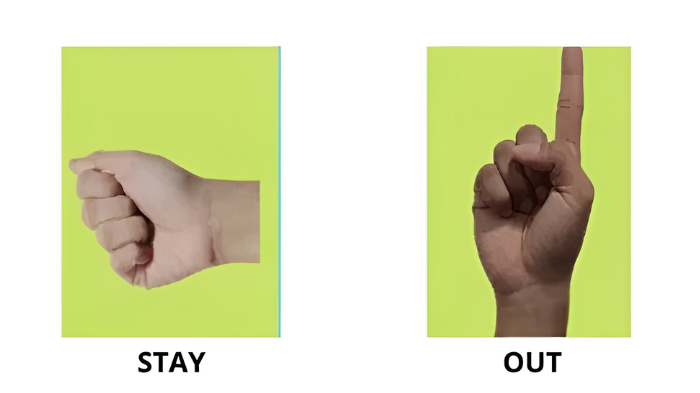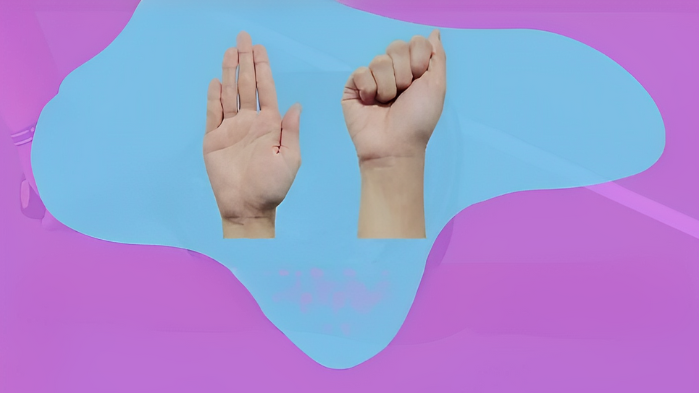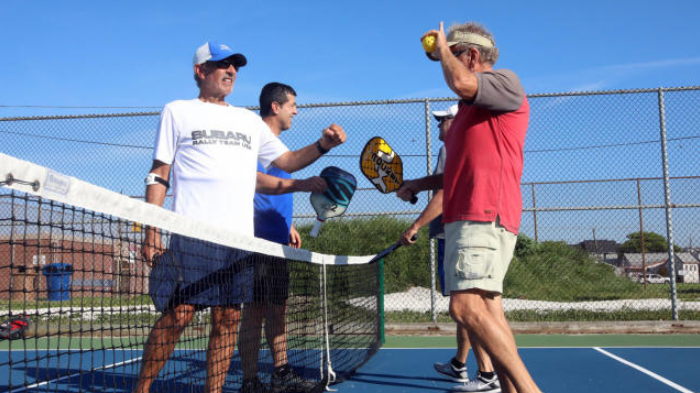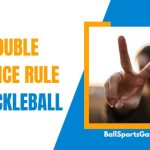Communication between the players on each team is one of the game’s essential components. One part of communication used in the pickleball game is pickleball hand signals, a non-verbal communication utilized by the pickleball players. In this blog post, we are going to explain about the pickleball hand signals along with the commonly used pickleball hand signals by the players in pickleball.

In this blog post, we are going to explain why you must use pickleball hand signals if you are a pickleball player, along with its utilization tips to follow when playing pickleball. Read this blog post, gather information on the pickleball hand signals, and start using pickleball hand signals for communicating with your team members regarding pickleball playing strategies and more during the pickleball match.
What Are Pickleball Hand Signals?
Pickleball hand signals are nonverbal cues used by players in pickleball to communicate with their partner on the court without verbally disrupting the game. These hand signals help players to coordinate their movements and strategies quickly and efficiently.
Common Pickleball Hands Signals Used By The Pickleball Players In The Game
Here are the most common pickleball hand signals used in the game:
Server’s Hand Signals:
- One Finger Raised: The server is serving to the right-hand court when one finger is lifted.
- Two Fingers Raised: The server is serving to the left-hand court when both fingers are up.
Partner Communication Hand Signals:
- Tap Paddle On The Side Of The Court: Indicates that the player wants his/her partner to move towards the opposite side of the court.
- Wave Hand Behind Back: Indicates that the player wants their partner to switch positions.
- Hold-Up Paddle: Indicates that the player wants their partner to hold their position.
Call Hand Signals:
- Fist Pump: Signals that the point has been scored and the ball has been in.
- Thumb Down: The ball is out of bounds when the thumb is pointing down.
- Touch The Top Of The Head: A player can use the hand gesture of tapping the top of his/her head to signify that the ball is out of bounds after being hit by it on the head and going out of play.
Receiver’s Hand Signals:
- Fist Raised: Indicates that the receiver is ready to receive the serve.
- Open Hand Raised: Indicates that the receiver is not prepared to receive the serve and needs more time.

Additional Pickleball Hand Signals:
- “Come In” Signal: The player at the net will signal to their partner to “come in” so that they can poach or intercept the ball by moving closer to the net.
- “Stay Back” Signal: The player at the net uses the “stay back” signal to tell their partner to stay back and cover the baseline in case the opponent hits a long shot.
- “Switch” Signal: When both players touch down on the same side of the court, this action, denoted by the word “Switch,” takes place. The player closest to the sideline indicates to their partner to switch sides so they can protect themselves from cross-court strokes.
- “Hit It To Me” Signal: The player who uttered the phrase “hit it to me” is indicating that they are prepared to receive the ball and is requesting their teammate to pass it in their direction.
- “Fake” Signal: The “fake” signal instructs the partner to simulate hitting the ball to trick the opponent and create an opportunity for a successful stroke.
Why You Have to Use Pickleball Hand Signals?
Pickleball hand signals are necessary for player coordination and successful communication. Pickleball is a fast-paced game, so it can be difficult to shout directions or call shots while a rally is in progress. Players can communicate more effectively and rapidly by using hand signals, which is essential for successful teamwork in the game. Here are some reasons why you need to use pickleball hand signals:
Faster Communication: Players can communicate fast and efficiently with pickleball hand signals while maintaining the game’s pace. Players can communicate their intents and strategies to their partners with simple hand gestures rather than shouting across the court.
Reduce Distractions: By using pickleball hand signals, you may communicate with your partner and other players more effectively while lowering the noise level on the court. In this manner, you may concentrate on playing without being concerned about disturbing others.
Better Coordination: Effective communication is key to successful teamwork in pickleball. Using hand signals, players can coordinate their strategies, make split-second decisions, and quickly respond to changing situations on the court.
Avoid Disturbing Opponents: Pickleball hand signals are a discrete means of communicating with your partner, helping you avoid disturbing your opponents or disclosing your game plan.
Quick and Easy: Pickleball hand signals are straightforward, simple to understand, and may be immediately applied during play.
Non-Verbal Communication: Hand signals provide a non-verbal way to communicate, which can be especially useful when playing with partners who speak different languages or have different accents. This way, players can avoid confusion and misunderstandings caused by language barriers.
Respectful Communication: Using hand signals shows respect for your partner and opponents. It demonstrates that you understand the importance of effective communication and are willing to work with others to achieve your goals.
How to Utilize the Pickleball Hand Signals While Playing Pickleball?
When playing pickleball, you need to make sure that you and your partner agree on the hand signals you will use and what they imply to use them effectively. Here are some tips for using pickleball hand signals efficiently:
Agree On The Signals: Before starting the game, talk about the pickleball signs you and your partner will employ and their intended meanings. Agreeing on a set of hand signals beforehand will ensure clear communication between you and your partner throughout the game and help you to understand each other’s intentions on the court.

Use The Signals Sparingly: Avoid using the signals excessively since this could confuse your partner and mess up your rhythm. Use the signals just when essential to prevent disclosing your approach to your opponents.
Make The Signals Clear: Use clear and concise hand signals so that your partner can understand them easily. Avoid using too many hand signals, as it might confuse your partner.
Time The Signals Right: Using the signals at the proper times, such as when you need to alter positions or instruct your partner to play a certain shot, can ensure that you get the desired results.
Please Pay Attention To Your Partner’s Signals: It’s important to pay attention to your partner’s signals so that you can anticipate their next move and be in the correct position on the court.
Be Aware Of Your Opponents: Try to use the signals in a way that doesn’t give away your strategy to your opponents. For example, avoid using the same signal repeatedly, as your opponents might catch on to your strategy.
Frequently Asked Questions
Players in pickleball can communicate with each other without disrupting the game by using hand signals. Using pickleball hand signals, you may instruct your partner on where to stand, where to hit the ball, and when to exchange sides.
Using pickleball hand signals can significantly improve communication with your partner and raise your chances of success; however, it is not necessary.
Try to make more clear and precise pickleball hand signals if your partner is having trouble understanding your signals. You can practice using clearer and more precise pickleball hand signals with your partner before the game to ensure that you both understand each other. This will help you avoid any confusion during the game and improve your communication on the court.
Making up your own hand signals is not recommended because your partner or other players will not be able to understand them. Follow the pickleball-specific hand signals wherever possible.
Yes, pickleball hand signals are allowed in all levels of play, from beginner to advanced. They are encouraged as a way to improve communication and make the game more enjoyable for everyone involved.
Conclusion
Pickleball hand signals are the most important part of non-verbal communication during the pickleball game. Pickleball players have a wide variety of common hand signals that they can use to interact with their teammates and plan out winning strategies. Using pickleball hand signals ensures faster communication with other players, prevents disturbance of opponents during the game, better coordination in the team, etc.
We have provided some tips in this blog on how to utilize the pickleball hand signals in this game. You can use those tips for using the pickleball hand signals to communicate with your team members. We hope that you will properly use the pickleball hand signals in the game and inform your team members properly on strategies that you or they can use or apply to win the match.



